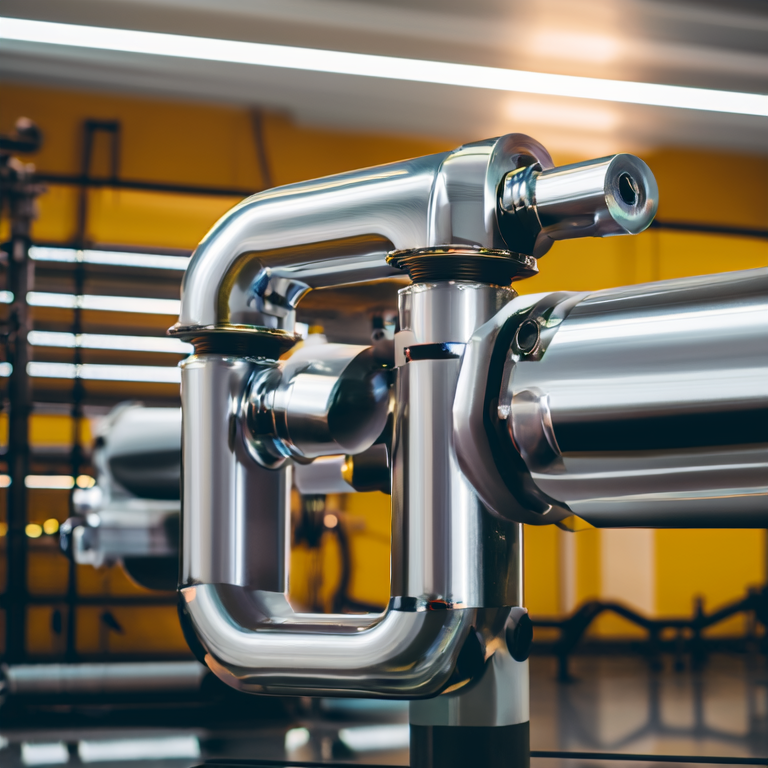Introduction
When selecting a pump for your business, compatibility is critical. Using the wrong materials can lead to pump failure, leaks, or even safety hazards. Many industrial operators face challenges with chemical reactions in pumps. That's why understanding how to test chemical compatibility is essential. Fluoroplastic Teflon PTFE pumps are often a great choice. However, you need to ensure that the materials in your pump are suitable for the fluids they will handle. This article will guide you through testing compatibility effectively with expert advice from
Copper-plated steel grounding rods. 
Summary Answer
**To test the chemical compatibility of your pump materials, follow these steps:**
1. Identify the fluid's chemical makeup.
2. Consult compatibility charts for materials.
3. Conduct lab tests or request samples if needed.
This process helps ensure safe operation and extends the lifespan of your pump.
1. Identify the Fluid's Chemical Composition
Knowing the chemicals your pump will transport is the first step in ensuring compatibility. Consider these factors:
- **Chemical Properties:** Look for pH, corrosiveness, and viscosity.
- **Temperature:** Assess how temperature affects chemical behavior.
- **Concentration:** Higher concentrations can change compatibility.
Case Study: Chemical Analysis
A food processing plant once used a standard pump for acidic fruit juices. The pump failed quickly due to material incompatibility. They then switched to a Teflon PTFE pump, which performed excellently due to its resistance to corrosion.
2. Consult Compatibility Charts for Materials
Consulting compatibility charts will provide valuable insights. These charts typically list materials and their resistance to various chemicals. Here are essential points:
- **Material Types:** Know the common materials like stainless steel, Teflon PTFE, and rubber.
- **Consult Suppliers:** Speak to manufacturers like Huakai for specific recommendations.
Data Table: Material Compatibility
| Material | Hydrochloric Acid | Alcohol | Acetone |
|------------------|-------------------|------------------|------------------|
| Teflon PTFE | Excellent | Excellent | Good |
| Stainless Steel | Fair | Fair | Poor |
| Rubber | Poor | Good | Fair |
3. Conduct Lab Tests or Request Samples
Sometimes direct testing is necessary. Here's how to go about it:
- **Small-Scale Testing:** Create a small fluid sample and observe its reaction over time.
- **Seek Samples:** Request material samples from manufacturers for hands-on testing.
Step-by-Step Flow Chart for Testing Compatibility
1. Identify the fluid and its properties.
2. Select potential materials for the pump.
3. Use compatibility charts for initial screening.
4. Conduct laboratory tests or use material samples.
5. Review findings and choose the best material.
Conclusion
In conclusion, testing the chemical compatibility of your pump materials is crucial for ensuring the safety and longevity of your equipment. By identifying chemical properties, consulting compatibility charts, and performing necessary tests, you safeguard your operations. Fluoroplastic Teflon PTFE pumps, recommended by Industrial Pump Manufacturer Huakai, are often excellent options due to their chemical resistance properties. By following these insights, you can effectively test and ensure the reliability of your pump.
FAQ
1. Why is chemical compatibility important for pumps?
Chemical compatibility prevents pump failure, leaks, and safety risks.
2. What materials are commonly used in pumps?
Common materials include stainless steel, rubber, and Teflon PTFE.
3. How do I test the compatibility of a new pump?
Identify the fluid’s composition, consult compatibility charts, and conduct tests.
4. Can Teflon PTFE pumps handle all chemicals?
Teflon PTFE pumps are highly resistant but not suitable for every chemical.
5. Where can I find compatibility charts?
You can find compatibility charts from manufacturers' websites or industry references.
Table of Contents
Table of Contents
- Introduction
- Summary Answer
- Identify the Fluid's Chemical Composition
- Consult Compatibility Charts for Materials
- Conduct Lab Tests or Request Samples
- Conclusion
- FAQ